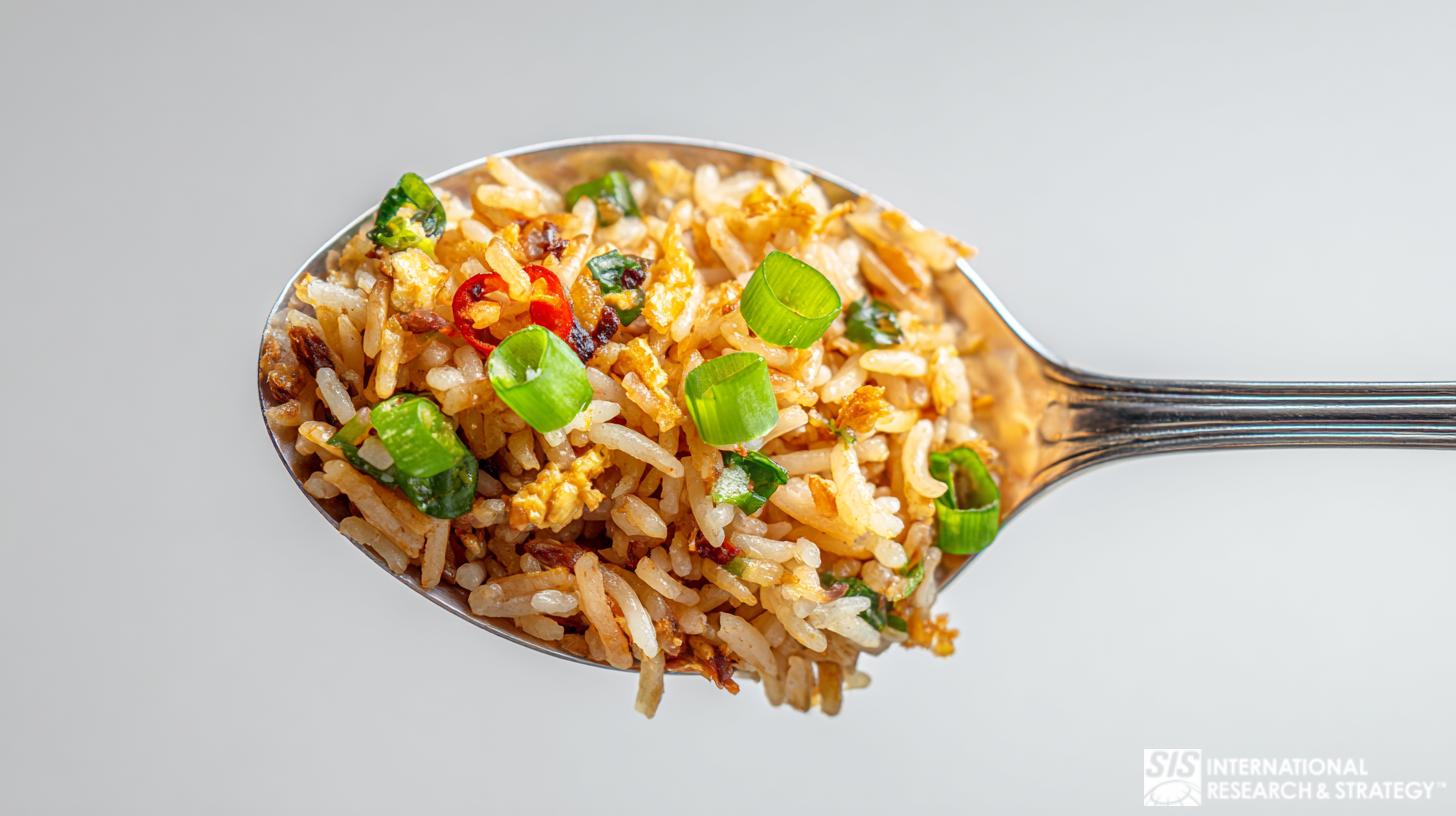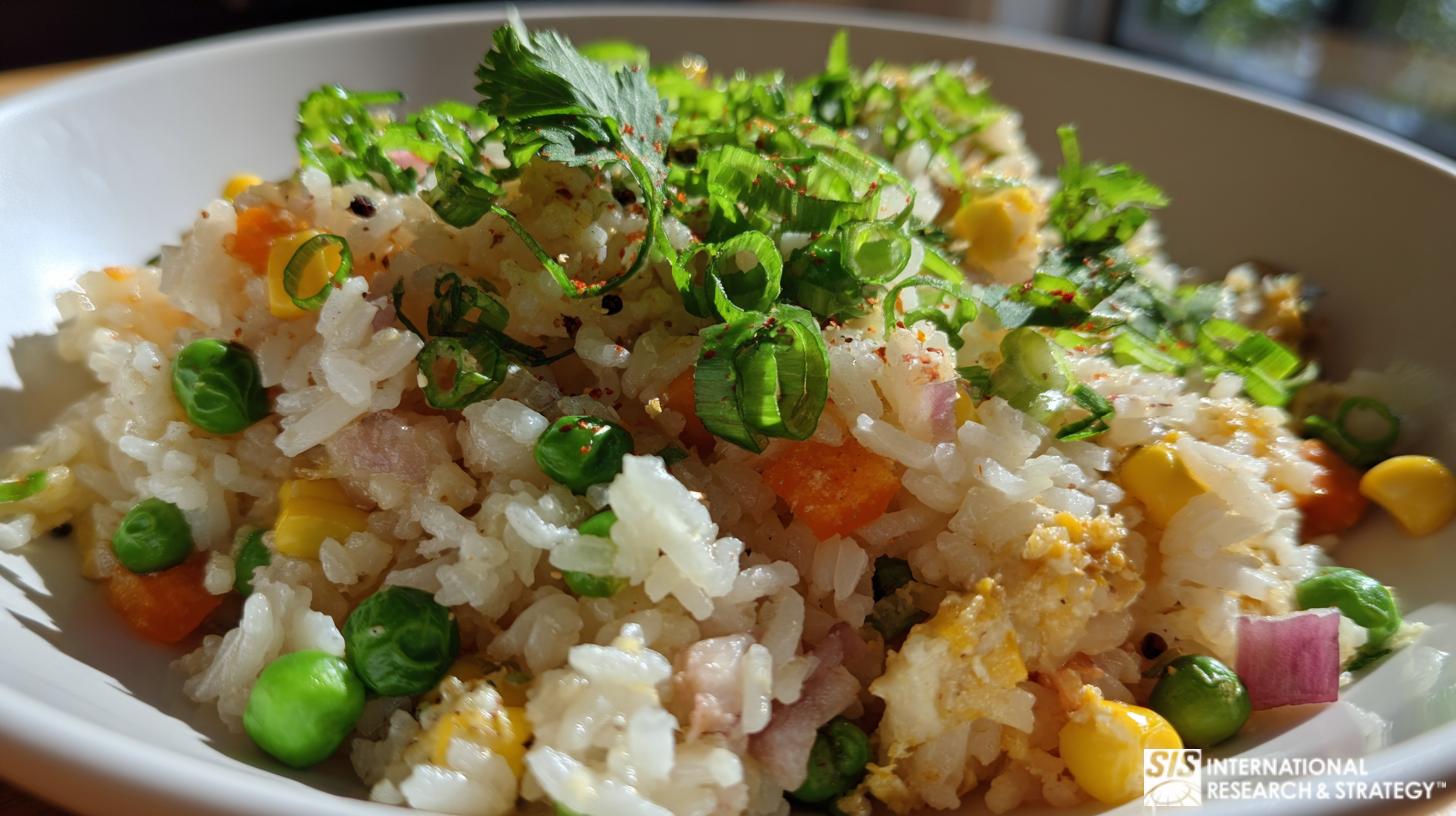Rice Market Research

As one of the most consumed grains worldwide, comprehending the dynamics of this market is essential. Therefore, rice market research provides critical data to stakeholders such as farmers, processors, and traders who want to make well-informed decisions on this ever-changing commodity.
Have you ever wondered how businesses navigate this vast and diverse market landscape? The global rice market is a dynamic and essential component of the agricultural economy, impacting millions of individuals and businesses worldwide. Let’s delve into the intricacies of rice market research and explore why businesses must understand this market thoroughly.
What Is Rice Market Research?
Rice market research studies the rice industry, encompassing production, consumption, trade, pricing, and emerging trends. This research provides businesses with actionable insights into market dynamics, helping them make informed decisions. By examining regional variations in consumption patterns, supply chain disruptions, and evolving consumer preferences, researchers comprehensively understand the rice market’s nuances.
It offers comprehensive data and analysis that allow stakeholders to make accurate decisions based on current trends and projections. These insights are crucial for making strategic plans, allocating resources appropriately, and investing wisely – resulting in better outcomes. Rice market research also helps stakeholders recognize their distinct selling points, refine processes for maximal efficiency, and gain an advantage over market competitors.
Furthermore, through rice market research, stakeholders can grasp the potential risks and challenges that may affect their operations. If aware of any threats beforehand, stakeholders can devise action plans to handle those challenges.
Who Uses Rice Market Research?

Food Manufacturers utilize market research to optimize product portfolios, develop new rice-based products, and understand consumer preferences. Agricultural Enterprises also gain insights into production trends, pricing dynamics, and export opportunities.
Moreover, Retailers and Distributors tailor inventory management and distribution strategies based on market demand and supply trends. Investors and Financial Institutions evaluate market opportunities and risks for investment purposes.
However, before embarking on rice market research initiatives, businesses should consider critical questions to optimize outcomes:
- What are the current consumption patterns of rice across different regions?
- How do pricing trends impact consumer behavior and market competitiveness?
- Which market segments offer the highest growth potential for rice products?
- What regulatory frameworks govern rice production, trade, and consumption in target markets?
- How do cultural preferences influence rice consumption and product preferences?
Market Drivers and Challenges for Rice Market Research
Examining market drivers and challenges associated with rice production is vital to maximising emerging opportunities while managing potential risks. By considering these factors during rice market research, stakeholders can craft effective strategies that promote growth in the industry. Here are some key points regarding market drivers and challenges:
Market drivers
- Growing global population: The world’s growing population has generated a strong demand for staple foods such as rice, making it necessary to increase production to meet the rising demand. This enormous need has made the rice market one of the most critical drivers of today’s food industry.
- Health and wellness trends: As people become increasingly aware of the impact their food choices have on their health, demand for healthier options like organic, whole grain, and speciality rice is skyrocketing. This presents a unique opportunity to capitalize on this trend and tap into an ever-growing market.
- Technological advancements: To meet the growing demand for rice and reduce production costs, precision agriculture, genetic modifications, and advanced machinery have been extensively used to innovate farming techniques. This has increased productivity and efficiency in the rice farming market.
Market challenges
- Climate change: Climate change poses a severe risk to rice production. Uneven weather cycles, droughts, and floods can result in lower yields of crops or total crop failure – and these issues present a real challenge for the entire rice market.
- Resource constraints: Rice market research indicates that the rice industry faces difficult decisions concerning the limited availability of water and land, as cultivating rice requires vast amounts of water. It is paramount that sustainable management practices are adopted to surmount these issues and guarantee long-term success for this sector.
- Government policies and trade barriers: Governmental regulations, such as taxes, can greatly affect the dynamics of rice markets. Restrictions on imports/exports or protectionist policies may limit market access and create challenges for producers and traders alike.
Key takeaways from the rice market research
- Continued growth: According to rice market research, the global rice market is forecasted to grow over the next few years. Stakeholders should anticipate this rising demand and seize new opportunities within emerging markets and varying product segments.
- Technological advancements: The rice industry has much to gain from capitalizing on the latest technologies used in farming, processing, and distribution. It can boost productivity and reduce costs.
- Climate change and resource constraints: Climate change and strain on resources are formidable challenges for the rice industry, yet stakeholders can still ensure ongoing success by prioritizing sustainable practices that efficiently use materials.
- Health and wellness trends: Consumers are becoming increasingly conscious of their health, leading them to seek out healthier food items. To satisfy this surging demand, stakeholders should capitalize on this trend by broadening their product offerings with organic, whole-grain, and specialty rice varieties.
- Competitive landscape: Recognizing the strategies and players within the competitive rice market is imperative for success. Stakeholders must continually evaluate their status about competitors, striving towards creative solutions that will help them fortify or increase their market share.
Market Forecast and Opportunities

• Projected growth rate and market size: Over the next decade, the global rice market will grow steadily due to population growth, urbanization, and shifting consumer tastes. As a result of this expansion in size, numerous opportunities await stakeholders looking for ways to expand their operations and further increase their overall market share.
• Emerging markets: With the increasing demand for rice, emerging markets in Africa and Latin America represent an incredible opportunity for industry players, from producers to traders.
• Instant and ready-to-eat rice products: With the booming urban population and lifestyle transformation comes a credible demand for ready-to-eat rice products. To capitalize on this trend, stakeholders should focus on product innovation, create new instant and convenient rice options, and expand their distribution channels to reach a greater audience needing convenience food solutions.
• Sustainable farming practices: As worries about global climate change and resource restrictions rapidly increase, there is an escalating demand for environmentally friendly farming practices in the rice sector. Stakeholders now have a chance to embrace and promote sustainable strategies such as water-saving technologies, precision agriculture, and integrated pest management that will guarantee prolonged growth while preserving ecological sustainability.
• Public-private partnerships: By partnering with governments, research institutions, and non-governmental organizations, stakeholders can strive to solve industry challenges including climate change, resource scarcity, and food security. Through public-private partnerships, innovation and knowledge exchange are encouraged – leading to sustainable growth in the rice market through best practices.
Industry Attractiveness: Porter’s Five Forces Analysis of the Rice Market
Porter’s Five Forces framework helps assess the competitive dynamics and attractiveness of an industry like the rice market:
1. Threat of New Entrants: The rice industry may face barriers to entry such as high capital requirements, economies of scale enjoyed by incumbents, and stringent regulatory standards. However, emerging markets and technological advancements can lower entry barriers for new players.
2. Bargaining Power of Suppliers: The bargaining power of rice suppliers (e.g., farmers, millers) can impact pricing and supply chain dynamics. Consolidation among suppliers or dependence on specific regions for rice production may influence supplier power.
3. Bargaining Power of Buyers: Large food manufacturers, retailers, and consumers collectively influence demand and pricing in the rice market. Shifts in consumer preferences and purchasing behavior can impact buyer power.
4. Threat of Substitutes: Substitutes like other grains (e.g., wheat, corn) and alternative food products pose a moderate threat to the rice market. Product differentiation and unique value propositions can mitigate the threat of substitutes.
5. Competitive Rivalry: The industry is characterized by intense competition among rice producers, processors, and retailers. Differentiation through product quality, branding, and distribution channels influences competitive rivalry.
How SIS International’s Market Research Helps Businesses

SIS International offers comprehensive market research and consulting services tailored to the specific needs of businesses operating in the rice industry:
Risk Mitigation:
Anticipating and mitigating risks is crucial in a dynamic market environment. Our research identifies potential market disruptions, regulatory challenges, and supply chain risks, empowering businesses to implement proactive risk management strategies and safeguard their operations.
Enhanced Consumer Understanding:
Deepening consumer insights is key to developing products and services that resonate with target audiences. SIS International’s research delves into consumer behaviors, preferences, and purchase drivers, enabling businesses to effectively tailor their offerings to meet evolving consumer demands.
Optimized Resource Allocation:
Efficient resource allocation is critical for maximizing returns on investment. Our research identifies market priorities, demand trends, and cost optimization opportunities, helping businesses allocate resources strategically to drive revenue growth and profitability.
Customized Research Solutions:
SIS International offers customized research solutions tailored to each client’s unique objectives and challenges. From qualitative studies like focus groups and interviews to quantitative data analysis and market forecasting, our research methodologies are designed to deliver actionable insights aligned with specific business needs.

